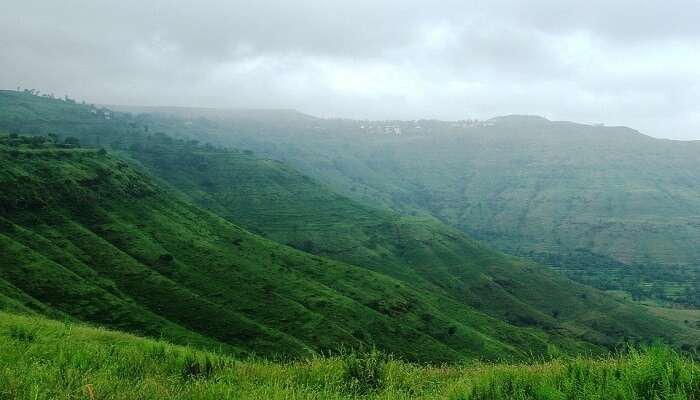11 Facts About Roman Forum: A Glimpse Into Rome’s Rich History
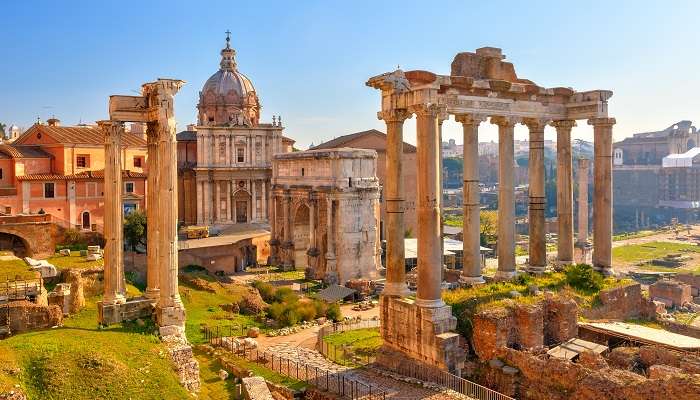
The Roman Forum, originally the hub of governance, politics, and culture during the Roman Empire, has layers of mystery and tragedy. From being the epicentre of the Empire and the grazing field to its glorious revival in the Renaissance, the Roman Forum has embraced major ups and downs. Check out the intriguing facts about Roman Forum in this blog to delve deeper into the rich history of Rome.
11 Intriguing Facts About Roman Forum
Do you know that the world-famous Roman Forum was historically an epicentre of the Roman Empire? Check out some of the interesting facts about the Roman Empire that make it one of the top-tier destinations in Rome, Italy.
1. Originally The Roman Forum Was A Marshland
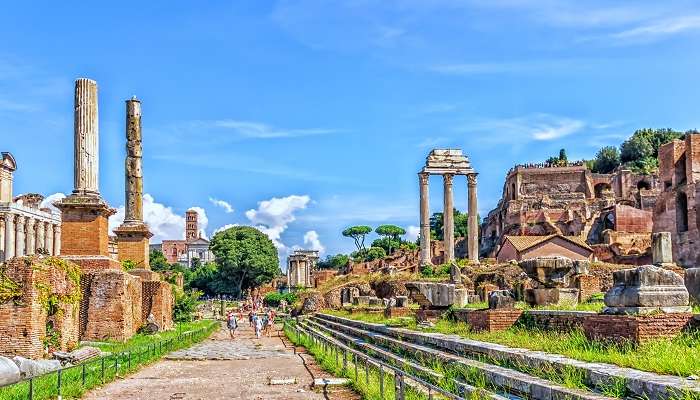
Originally, the Roman Forum was a mashy low-lying wetland between the Palatine Hills and Capitoline. Thus, it was quite impossible to construct habitable buildings or monuments. However, the Romans did not wish to waste the land. They devised distinct ways to make the area habitable. By building a sewerage system, the artists succeeded in creating usable land. Additionally, it transformed into a centre of governance, commerce, and culture over centuries. All in all, the Roman Forum stands as a symbol of power and prestige. Also, it reflects the rich history of Rome.
Must Read: Honeymoon In Rome
2. A Bustling Hub Of The Roman Empire
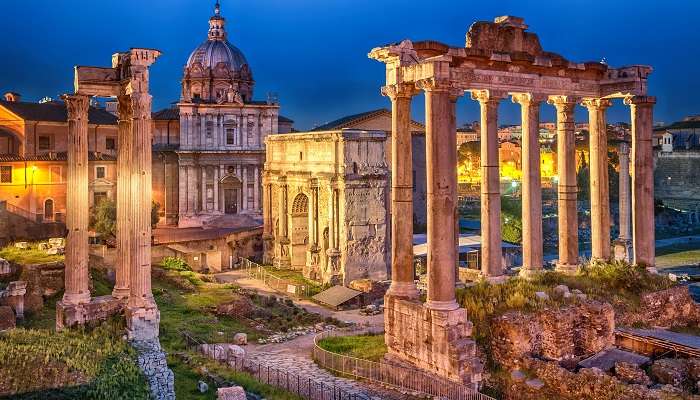
During the times of the Roman Empire, the Forum was the epicentre. It was a marketplace and civic centre, adorned with basilicas, temples, and monuments. Here, the citizens assembled to participate in trade, hear political speeches, engage in rituals, and more. Moreover, the emperors engaged in triumphal processions that paraded through the streets. Even today, the historical road named Via Sacra is in the Roman Forum. However, it was once used during the Roman Empire. All in all, the fact that the Forum was once a hub of the Roman Empire is intriguing to all, especially among history buffs.
3. Transformation Into A Grazing Field After The Collapse of The Roman Empire

Followed by the collapse of the Roman Empire, the once majestic Roman Forum witnessed a major breakdown. It was transformed into a pastoral landscape, wherein temples and monuments were weathered by time. In addition, the Roman Forum was devoid of its former glory and abandoned by the locals. Because of the absence of governance and infrastructure, the Forum became a grazing field. It is among the important facts about the Roman Form as it went down a major backdrop. Metaphorically, the poignant shift of the Forum to a grazing field symbolizes the decline of Roman civilization. It was marked by political disturbance and economic instability.
Suggested Read: Places To Visit In Vatican City
4. Rediscovery Of The Roman Forum In The Era Of Renaissance
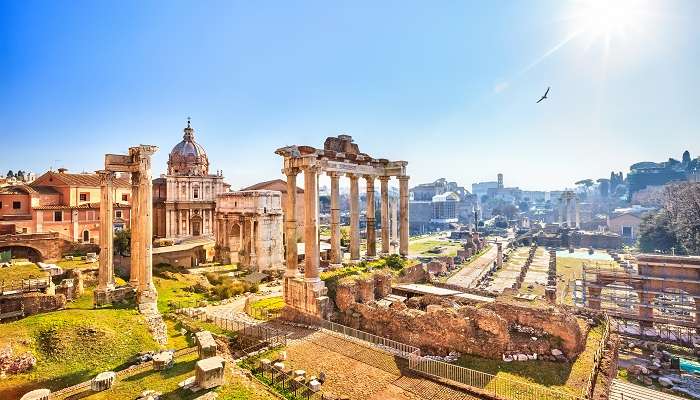
One of the interesting facts about the Roman Empire is that it experienced a revival during the Renaissance. The archaeologists, especially Petrarch and Cyriac of Ancona, excavated the Forum precisely and found its iconic ruins buried beneath centuries of ignorance. They revealed the remnants of columns, statues, and temples and amidst all of this, they uncovered glimpses of Rome’s glorious history. You may not believe that the process of excavation took several centuries. It began in the 15th century and not until the 20th century, it was fully excavated. In addition, there is ongoing archaeological work and research even today.
5. A Sight Of Julius Caesar’s Cremation

Julius Caesar, a Roman statesman, military general, and dictator played an important part in the transformation of the Roman Republic to the Roman Empire. After he was assassinated by senators, including Brutus and Cassius, his body was taken to the Roman Forum for cremation. Mourners gathered here to grieve and pay their respects to the late Caesar. The funeral pyre was erected in the Forum, highlighting the end of an era and the beginning of political unrest. Hence, this remains one of the key facts about Roman Forum, still unknown to many.
Suggested Read: Roman Food
6. The Temple Of Vesta: Residence Of The Vestal Virgins
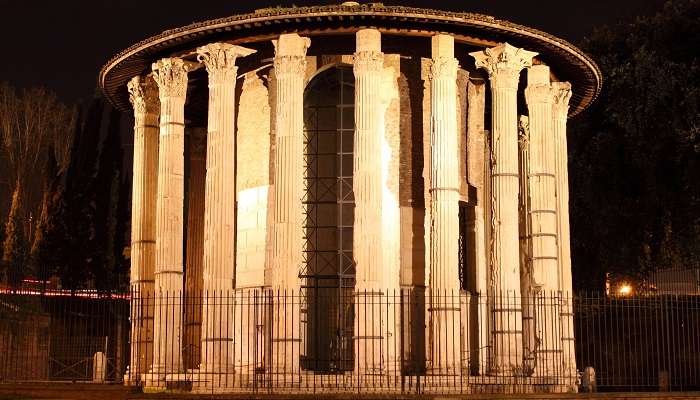
Not many people are aware of the fact that the Temple of Vesta served as the sacred residence of the Vestal Virgins. The goddess Vesta was the guardian of home and hearth. Dedicated to the Goddess, the priestesses or the Vestal Virgins were chosen from only noble families at a young age. Vestal Virgins were committed to a thirty-year term of celibacy and promised to maintain the eternal flame. Furthermore, their role was to preserve Roman artefacts and engage in public ceremonies. Furthermore, the Temple of Vista was a sanctuary where the Vestal Virgins kept their vows and ensured the continuity of the Roman Empire.
7. The Display Of The Body Parts Of Enemies To The General Public
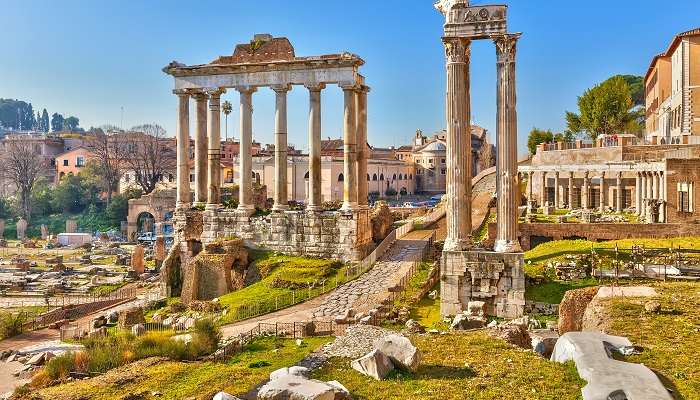
In the Roman Forum, the Rostra acted as a platform for public speeches and announcements. Not only this but it was also used to display the body parts of executed traitors and enemies. Such gruesome displays were aimed at spreading fear among those who tried to respect the emperors and reinforce the power of the ruling elite. Many people still are not aware of the act of showing mutilated parts to the general public was a macabre spectacle at this attraction. So, this remains one of the thrilling facts about Roman Forum.
Suggested Read: Things To Do In Rome
8. The Discovery Of Distinct Structures In The Roman Forum
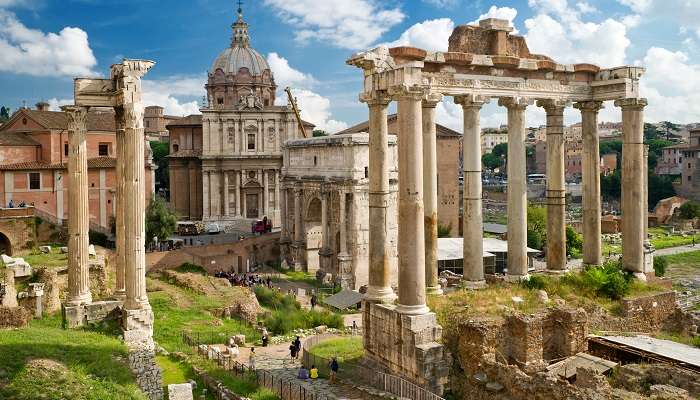
After a thorough exploration of the Roman Forum , the remains of distinct structures and temples were found. Each structure was a mak of Roman’s past. Among many remains, there were the Temple of Saturn, the Temple of Castor and Pollux, Basilica Julia, and the Arch of Septimius.The unveiled structures or the Roman Forum as a whole, echo the tales of Rome’s glorious history. Thus, exploring this culturally-rich attraction is a must in your itinerary.
9. Basilica Of Maxentius: The Largest Structure At The Forum
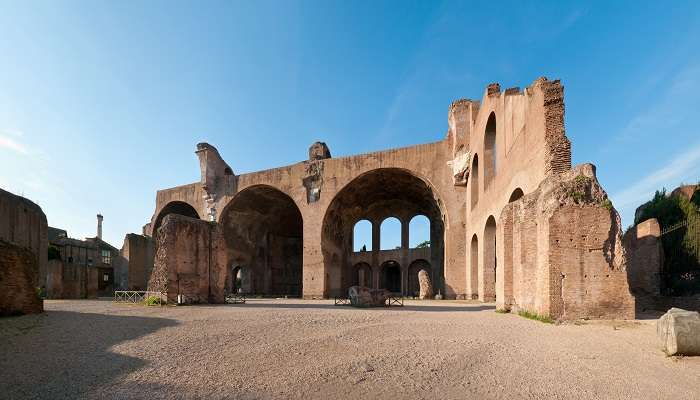
Among many structures in the Forum, the Basilica of Maxentius is the largest. It was built by Emperor Maxentius in the 4th century CE. It once served as a place for legal affairs and highlighted the emperor’s power. Although the structure is incomplete, the Basilica of Maxentius is an architectural marvel that echoes the rich tales of Rome’s past. All in all, the Basilica of Maxentius being the largest structure is among the interesting facts about Roman Forum.
Suggested Read: Rome Nightlife
10. Location Of The Tomb Of Romulus
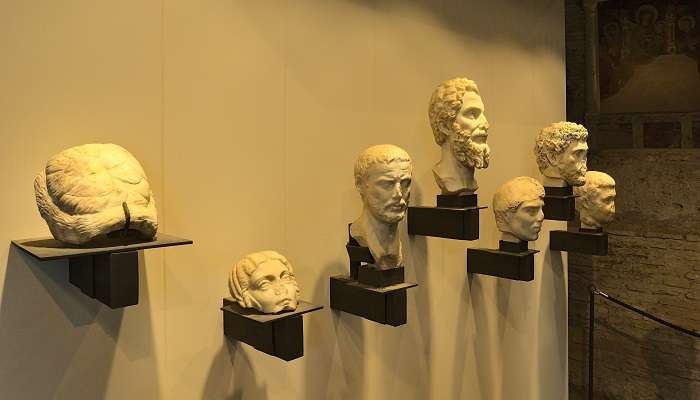
Rome was founded by Romulus and his twin brother Remus. It is believed that they were abandoned as infants and raised by a she-wolf. Later, Romulus became the first king of Rome and established Rome’s foundation around 753 BCE. His tomb was built inside the Roman Forum after he passed away. It is one of the key facts about the Roman Forum. Even today, visitors can see the tomb of Romulus. Hence, do not forget to visit this place on your next trip to Rome.
11. The Column Of Pzocas: The Last Monument Built In The Roman Forum
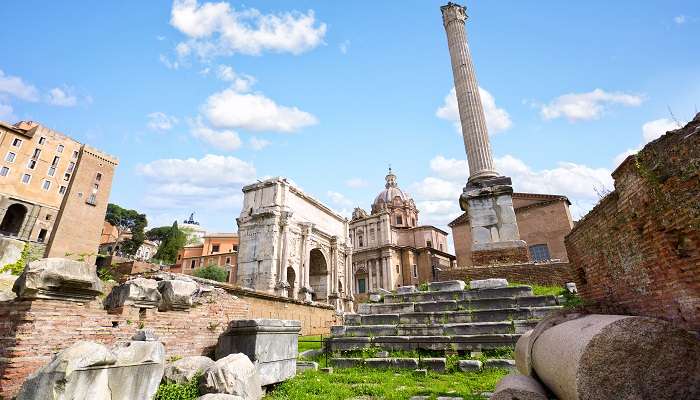
Erected in 608 CE, the Column of Phocas stands as the final monument built within the Roman Forum. It was commissioned by the Eastern Roman Emperor Phocas. The column served as a symbol of Christian triumph and Byzantine authority. Moreover, it commemorated the reign of the emperor Phocas. This is one of the key facts about Roman Forum, still unknown to many.
Further Read: Summer In Rome
The Roman Forum unfolds a rich and glorious past of Rome. Whether a history buff, scholar, or someone just looking for places to visit in Rome, one explores this magnificent place due to its history. Learn about the intriguing facts about Roman Forum to know how this place is visited by millions of people worldwide. Thus, on your next trip to Rome , do not forget to add this iconic place to your itinerary.
For our editorial codes of conduct and copyright disclaimer, please click here.
Cover Image Source: Shutterstock
Frequently Asked Questions About Facts About Roman Forum
Why is the Roman Forum important?
The Roman Forum played a crucial role in shaping Rome’s history and identity. Originally, it was a social, political, and religious centre during the Roman Empire. Even today, it carries the ruins dating back centuries, thereby echoing the tales of Rome’s rich history.
Why was the Roman Forum built?
The Roman Forum was built as a marketplace and civic centre for facilitating trade, public gatherings, and governance during the Roman Empire.
Why is the Roman Forum so famous?
The Roman Forum is famous for its rich history, architectural marvels, association with significant events, like the tomb of Julius Caesar, and more. It played an important role in Roman civilization and still carries the remains of emperors, temples, and monuments.
How old is the Roman Forum?
The Roman Forum dates back almost 2500 years, among the key facts about Roman Forum.
What was the Roman Forum called?
In Latin, the Roman Forum was also known as Forum Romanum.
People Also Read:
Best Places To Visit In London Places To Visit In Abu Dhabi Places To Visit In Bangkok

Experience the world through captivating stories of adventure and travel. As a senior content writer, I bring my passion for exploration to life, crafting tales that take you on a journey. With my words, you’ll feel the thrill of discovery and the joy of experiencing new cultures. Let me turn your imagination into a reality with stories that inspire you to explore and embrace the world.



